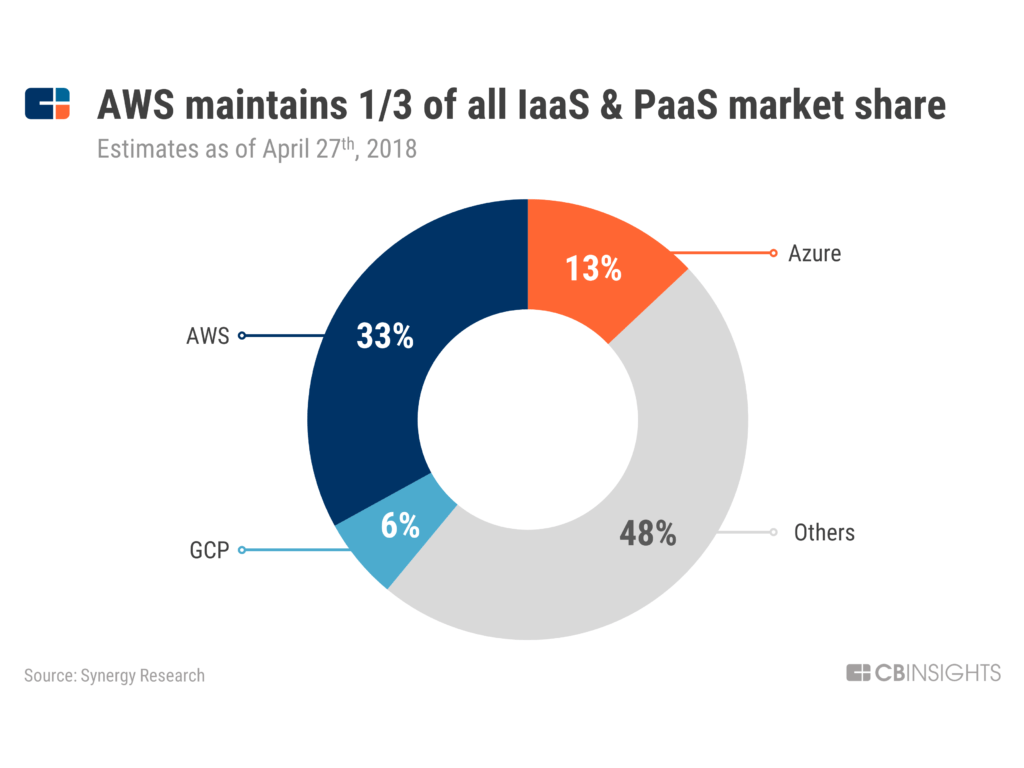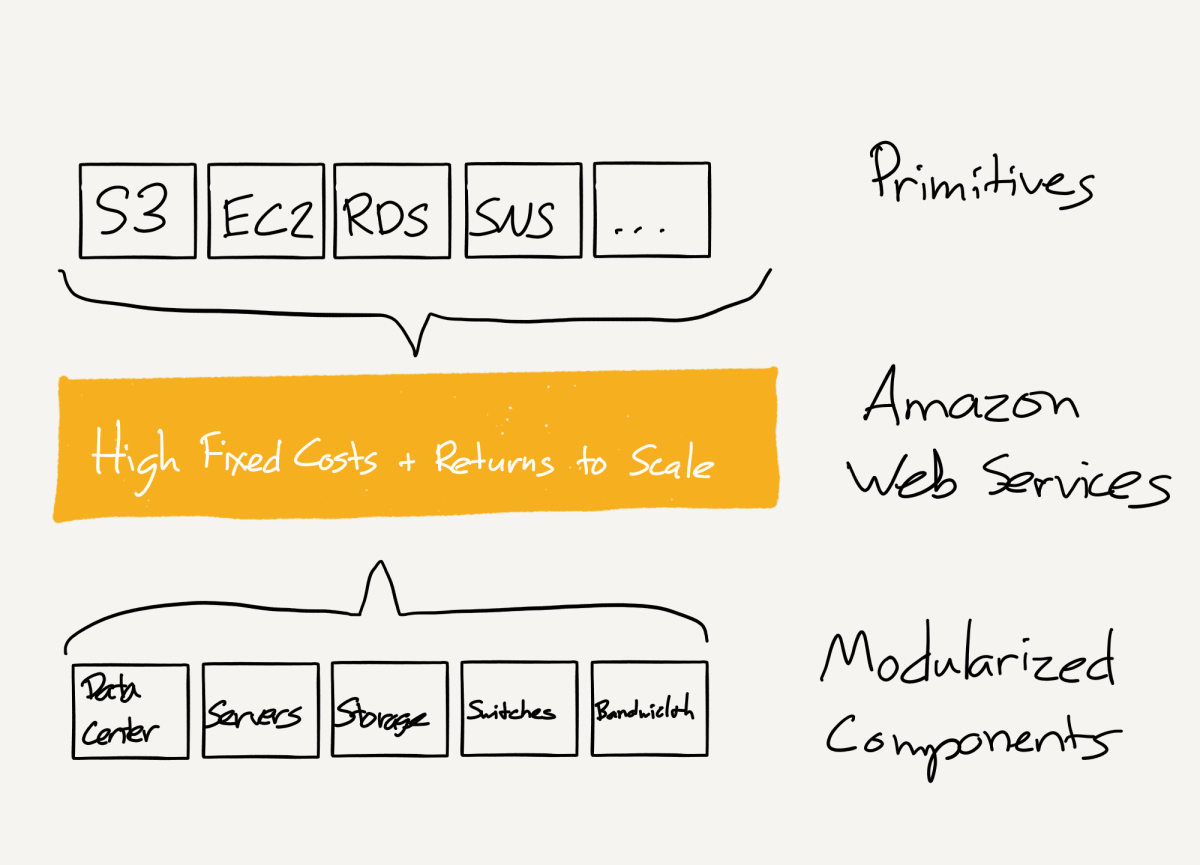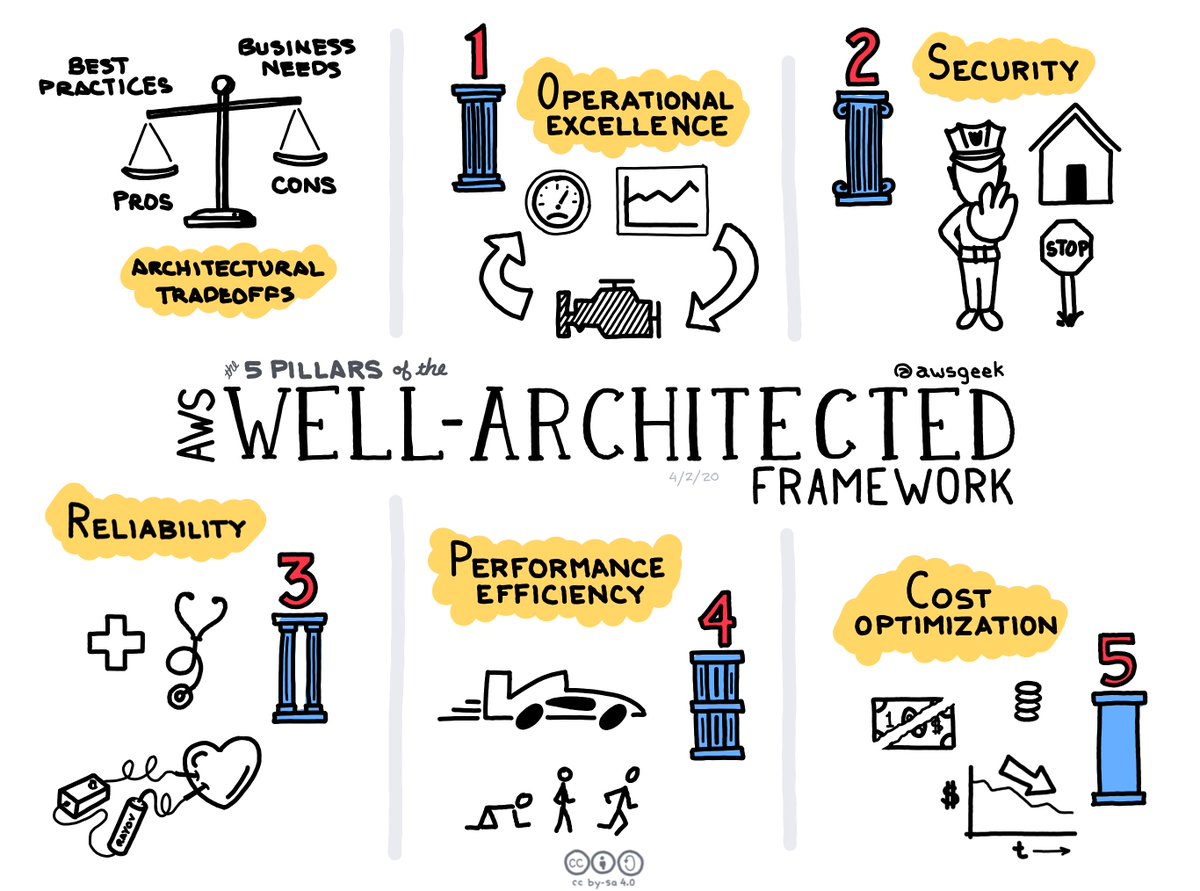
Amazon Web Services (AWS) is a $54 billion behemoth.
It's bigger than Marriott, Netflix, and Twitter...combined.
Yet 99% of us don't actually understand the business.
THREAD: The story of AWS & lessons we can learn from it
It's bigger than Marriott, Netflix, and Twitter...combined.
Yet 99% of us don't actually understand the business.
THREAD: The story of AWS & lessons we can learn from it
AWS is electricity for the internet.
It is the largest provider of on-demand, cloud computing services in the world.
With 33% of a $150 billion global cloud market, AWS makes our digital lives possible.
It is the largest provider of on-demand, cloud computing services in the world.
With 33% of a $150 billion global cloud market, AWS makes our digital lives possible.

While you may not be AWS's customer, you sure as hell use it every day.
Here are some of its clients:
- Netflix
- Zoom
- Verizon Wireless
- Coinbase
- Vanguard
- Amazon.com
- Morning Brew
- GoPro
- Samsung
- Pinterest
- Snap
- FanDuel
Here are some of its clients:
- Netflix
- Zoom
- Verizon Wireless
- Coinbase
- Vanguard
- Amazon.com
- Morning Brew
- GoPro
- Samsung
- Snap
- FanDuel
So now, you hopefully buy why AWS important.
But how did it start?
Let's hop in our tweet thread time machine....
But how did it start?
Let's hop in our tweet thread time machine....
It's 2003.
You're Jeff Bezos & your business is growing like a weed.
1999: $1.64 billion (revenue)
2000: $2.76 billion
2001: $3.12 billion
2002: $3.93 billion
2003: $5.26 billion
But you have a serious problem...
You're Jeff Bezos & your business is growing like a weed.
1999: $1.64 billion (revenue)
2000: $2.76 billion
2001: $3.12 billion
2002: $3.93 billion
2003: $5.26 billion
But you have a serious problem...
IT is a bottleneck to Amazon's growth.
Employees are spending 70% of their time on tech infrastructure.
- Building servers
- Provisioning databases
- Scaling databases
Everything but focusing on Amazon's customers.
Employees are spending 70% of their time on tech infrastructure.
- Building servers
- Provisioning databases
- Scaling databases
Everything but focusing on Amazon's customers.

Save them time & you can:
1) Help 3rd party retailers build their own web stores
2) Focus on faster customer innovation internally
3) Handle peak traffic during the holidays
1) Help 3rd party retailers build their own web stores
2) Focus on faster customer innovation internally
3) Handle peak traffic during the holidays

You need someone to solve this problem.
Someone you can trust.
Enter Andy Jassy.
Yes, the same Andy Jassy who was named as Amazon's newest CEO on July 5, 2021.
Someone you can trust.
Enter Andy Jassy.
Yes, the same Andy Jassy who was named as Amazon's newest CEO on July 5, 2021.

Jassy joined Amazon in 1997, right around the company's IPO.
His first job was in Marketing, working on the launch of Amazon Music.
His second job was as Jeff Bezos's Chief of Staff.
And his third job was to solve this tech headache plaguing the company.
His first job was in Marketing, working on the launch of Amazon Music.
His second job was as Jeff Bezos's Chief of Staff.
And his third job was to solve this tech headache plaguing the company.
By late 2003, Jassy shared a vision for an "Internet Operating System."
The idea: take this tech mess & simplify it into a shared platform with 3 building blocks...
- Storage
- Computing
- Databases
Employees could now spend 70% of time serving customers vs. racking servers.
The idea: take this tech mess & simplify it into a shared platform with 3 building blocks...
- Storage
- Computing
- Databases
Employees could now spend 70% of time serving customers vs. racking servers.

Ultimately, Amazon got really good at managing tech infrastructure.
Good enough, where Jassy said something along the lines of...
"Hey we're pretty good at this IT thing. It was a pain in the ass for us & it's a pain in the ass for others. Why don't we make this a product?"
Good enough, where Jassy said something along the lines of...
"Hey we're pretty good at this IT thing. It was a pain in the ass for us & it's a pain in the ass for others. Why don't we make this a product?"
So in 2006, AWS was born.
It was the first pay-as-you-go IT infrastructure, shepherding a new era of cloud computing.
Here's the OG announcement 👇
It was the first pay-as-you-go IT infrastructure, shepherding a new era of cloud computing.
Here's the OG announcement 👇

AWS was an instant unlock for customers.
1) Fixed costs became variable costs
2) Economies of scale lowered costs
3) On-demand created flexibility & speed
4) You didn't have to maintain servers
5) Global reach & performance
1) Fixed costs became variable costs
2) Economies of scale lowered costs
3) On-demand created flexibility & speed
4) You didn't have to maintain servers
5) Global reach & performance

Take Netflix—a big AWS customer—for example.
If you go to Netflix.com, you’re seeing that homepage because of AWS.
Your computer is actually connecting to an AWS server via the internet.
And that server hosts Netflix.com on behalf of Netflix.
If you go to Netflix.com, you’re seeing that homepage because of AWS.
Your computer is actually connecting to an AWS server via the internet.
And that server hosts Netflix.com on behalf of Netflix.

It's simple, but so powerful.
First, Netflix is significantly more cost-efficient because of AWS.
Without AWS...
Netflix would purchase thousands of physical servers, pay for real estate to house them, and hire people to maintain them.
First, Netflix is significantly more cost-efficient because of AWS.
Without AWS...
Netflix would purchase thousands of physical servers, pay for real estate to house them, and hire people to maintain them.
Second, Netflix has far more flexibility.
Let’s say Netflix projects 300mm customers in 2022.
It would have to buy enough servers to satisfy 300mm customers.
Let's say 2022 actuals are 250mm.
Netflix lit millions of $ on fire by predicting too much demand.
Let’s say Netflix projects 300mm customers in 2022.
It would have to buy enough servers to satisfy 300mm customers.
Let's say 2022 actuals are 250mm.
Netflix lit millions of $ on fire by predicting too much demand.
That is why AWS exists.
Rather than buy compute power or storage, you rent space from AWS based on your server needs today.
Now that you understand AWS, there are two final lessons we can learn from this business.
Rather than buy compute power or storage, you rent space from AWS based on your server needs today.
Now that you understand AWS, there are two final lessons we can learn from this business.
Lesson 1: Dogfooding is a great strategy for launching new products.
AWS was founded out of Amazon’s frustration with its own tech situation.
Everyone was spinning up resources (like servers) for each project versus scaling, sharing, and reusing servers.
AWS was founded out of Amazon’s frustration with its own tech situation.
Everyone was spinning up resources (like servers) for each project versus scaling, sharing, and reusing servers.
Andy Jassy & co built out a set of shared services that engineers could access easily as needed.
Amazon.com was customer #1 for this service, a service that would end up becoming the operating system of the internet.
Amazon.com was customer #1 for this service, a service that would end up becoming the operating system of the internet.
Lesson 2: AWS is a textbook beneficiary of Scale Economies.
The business has massive fixed costs from owning and maintaining millions of servers.
As it attracts more customers, the economics get better & the moat gets bigger.
The business has massive fixed costs from owning and maintaining millions of servers.
As it attracts more customers, the economics get better & the moat gets bigger.
Step 1: pay a shit ton for servers
Step 2: as biz grows, spread massive costs across more customers
Step 3: as per customer costs decrease, lower price of AWS for customers
Step 4: as price of AWS decreases, competitors put in shitty spot
Step 5: world domination
Step 2: as biz grows, spread massive costs across more customers
Step 3: as per customer costs decrease, lower price of AWS for customers
Step 4: as price of AWS decreases, competitors put in shitty spot
Step 5: world domination
[exhales]
We made it!
If you enjoyed this thread & want more business breakdowns, follow @businessbarista!
We made it!
If you enjoyed this thread & want more business breakdowns, follow @businessbarista!

And if you want to go deeper, here are a few more resources for you...
Listen to the story of Andy Jassy (Amazon's new CEO): bit.ly/3hkHRf8
Listen to a full breakdown of AWS: bit.ly/3AN6DfG
Listen to the story of Andy Jassy (Amazon's new CEO): bit.ly/3hkHRf8
Listen to a full breakdown of AWS: bit.ly/3AN6DfG
• • •
Missing some Tweet in this thread? You can try to
force a refresh







